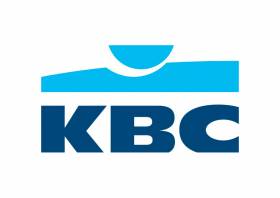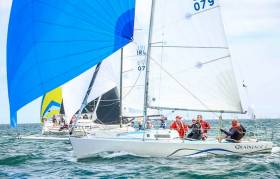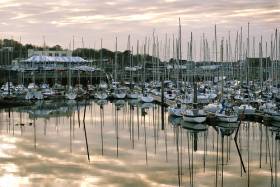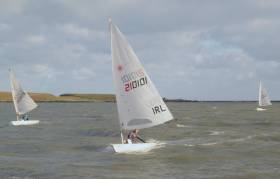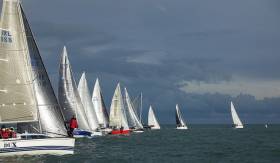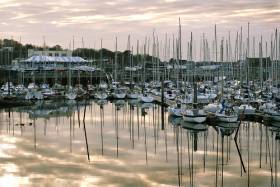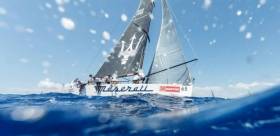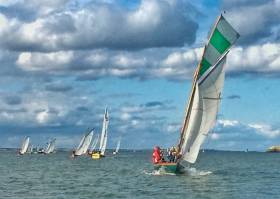Displaying items by tag: HYC
Revamp In Store For Howth’s Autumn League In 2018
#HYC - Howth Yacht Club’s annual Autumn League gets a whole new makeover for 2018 with a new sponsor, plenty of weekly prizes and promotions, and a full entertainment programme.
Racing in the KBC Autumn League 2018 begins on Saturday 15 September for the six-week series, which includes a special family day on Saturday 22 September, and a gala dinner and prize-giving on the final night, Saturday 20 October.
The online entry form, entry list and Notice of Race are now available from the HYC website.
#HYC - Ahead of the eagerly awaited Wave Regatta, Howth Yacht Club is getting ready to host the Sportsboat Cup 2018 this coming weekend — but it’s a contingent from Cork who are looking to retain the top prize for the Rebel County.
Defending champion T-Bone, the Durcan/O’Shea boat helmed by All Ireland Helmsman Champion Alex Barry, returns to the European Championship 1720 fleet where they will no doubt face a strong challenge from Antix — which has Fionn Lyden taking the place of Anthony O’Leary as skipper for this event.
Boats from Dun Laoghaire, Cork, Baltimore, Galway and Wales are set to converge on the Howth Peninsula for the 1720 title alongside a mixed fleet of Half and Quarter Tonners, among them Conor Fogerty’s vintage Silver Shamrock. (Download the sailing instructions below.)
As previously reported on Afloat.ie, this year’s Sportsboat Cup also incorporates the inaugural J/80 Irish National Championships, with Pat O’Neill’s Mojo having the jump on a small but experienced fleet with past Olympians, national champions and sailmakers involved.
The event runs back-to-back with Howth Yacht Club’s Wave Regatta on the weekend of 1-3 June, and its hoped many of the Sportsboat Cup competitors from the UK will stay on to race with the Irish fleet.
Andrew Algeo’s Juggernaut leads the J109’s into division one but faces stiff competition under IRC, as reported earlier today on Afloat.ie.
Howth Yacht Club Sailing School Launches ‘Quest’ For New Blood
#HYC - Howth Yacht Club is preparing to roll out its new sailing school initiative in the coming weeks as the spring season catches the breeze.
Quest Sailing has been devised with the intention of bringing “new blood into the club”, according to Commodore Joe McPeake, who notes that the scheme will already involve participation at the corporate level as well as a number of language schools.
“This will create a much greater activity in the water, and hopefully will bring in new members and reinvigorate the sailing platform,” he says.
Volunteers are also wanted to help the club in various ways, with an evening scheduled for next Thursday 29 March to connect with members who wish to contribute beyond the usual activities afloat.
Elsewhere in his message for Spring 2018, McPeake hails the season-opening Icebreaker open dinghy event, which runs for five weeks from Sunday 15 April and promises fun on the water for Optimists, Lasers, Fevas, 420s and Toppers alike ahead of the junior racing season proper. The programme launch takes place at the clubhouse tomorrow Saturday 24 March at 4pm.
The beginning of summer will see another open event in the Wave Regatta over the June Bank Holiday, which will showcase facilities currently being spruced up after escaping the ravages of Storm Emma relatively unscathed.
Howth Yacht Club has much more from the commodore’s spring statement HERE.
Norbert Reilly Resigns From ICRA On Eve Of Crucial Symposium
#ICRA - Norbert 'Nobby' Reilly has resigned from the Irish Cruiser Racing Association (ICRA) over disagreements with its direction in the last 12 months.
In his resignation letter submitted yesterday (Thursday 18 January), the Howth Yacht Club stalwart and former ICRA commodore suggested that it is “probably a good time to wind up” the association, on the eve of a symposium to determine its future direction.
Reilly accused ICRA of “getting in the way of its own plan” since a memorandum of understanding signed in 2016 with the ISA, now Irish Sailing, led to a boost in its finances for cultivating and promoting cruiser racing in Ireland.
Of its €50,000 budget for 2017 — four times ICRA’s revenue in 2015 — allocations of €11,000 were made for training and €8,500 for recruitment via CrewPoint.
But Reilly claims only €2,000 of the former was spent in clubs (Howth YC and the Royal Cork) which already have training programmes in place, with little spend or results for the latter.
Fixture clashes, disputes over venue selection, a drop in crew numbers and a poor return from its communications/web and social media budget are some of the other issues cited by Reilly in influencing his decision.
Specifically, Reilly says that the selection of Galway as host venue of this year's ICRA Nationals was not passed by the executive, and that the first he knew of the decision “was on Facebook”.
Speaking to Afloat.ie on Reilly’s resignation, ICRA commodore Simon McGibney paid tribute to his contributions to cruiser racing, but added that the departing executive’s comments should not affect plans for the weekend symposium, which starts tomorrow morning in Limerick.
“Strategically what we’re trying to do is to take a good look and review where we [as ICRA] want to see ourselves in the next five years, and that has always been the case going forward.”
McGibney added that he believes Reilly was given a fair hearing from the ICRA board, but decisions “are always done by majority”.
Regarding the ICRA Nationals in Galway this August, McGibney dismisses suggestions that the event would not be a ‘true nationals’ without the presence of Dublin boats because “there is a rotation of where the Nationals will be hosted” as bound by the ICRA constitution.
“Galway is an ideal location to bring it to the West Coast,” he added, urging people to “look at the bigger picture” of the event as “a promotion for cruiser racing on a national level.”
Familiar Faces On Howth’s Laser Frostbite Leaderboard
#HYC - Conditions for Howth Yacht Club's Laser Frostbites yesterday (Sunday 14 January) contrasted those of the opening weekend — with the sun shining and a southerly breeze rising from 12 to 19 knots over the course of the day’s two races.
Twenty-three boats took to the water, comprising 14 standard rigs, seven Radials and a pair of 4.7s. With significant shifts, a wind bend and the tide ebbing across the course, no one was comfortable in their position.
Ronan Wallace got ahead early in the first race and held on to to take a comfortable first, while long-term rivals Ronan Cull and Paul McMahon fought it out for second, Ronan getting to the line ahead.
The Howth Yacht Club website has more on yesterday’s racing HERE.
#HYC - Entries are open for Howth Yacht Club’s 38th Autumn League, which runs for six weeks from Saturday 16 September.
Combining quality keelboat racing with a lively après-sail social schedule, this year’s event will see the continuation of the winning formula of recent years and be run on Saturday afternoons.
This affords competitors plenty of time to get to the start line for the first gun at 2.30pm, with the exception of the slightly earlier final-day start sequence, which commences at 1pm.
Making the league more attractive for non-HYC teams is a focus for the event team this year, including special-rare marina berths for visiting boats (with a further discounts for entries received before this Wednesday 30 August).
The club will also present presenting a full social and hospitality programme for the six weeks, including sponsored weekly drinks promotions and a final night party to remember.
However, it’s the action on the water that makes Howth’s Autumn League what it is. Racing fleets will be separated into two groups and two race areas, with an ‘offshore’ fleet comprising at least five cruiser divisions and an inshore fleet for one-design keelboat classes.
Following a recent survey and feedback and in a move to encourage increased participation in the cruiser classes, the normal practice of resetting ECHO handicaps to standard level at the beginning of the event will not be used, and instead boats will be allocated a rating reflecting current form.
This year’s Autumn League starts two weeks after the J80 Nationals and J-Cup event, being hosted in Howth on the weekend of 2-3 September, and it’s hoped that many of those competitors, including J24s and J109s, will stay on to compete in the six-week series.
Following the often gentle sailing conditions usually experienced in July and August, HYC’s Autumn League can be an exhilarating event for many crews, always delivering a high standard of racing through the experienced hands and organisational skills of its internationally renowned race management teams.
The course card is designed to give a varied range of race options, including windward/leeward, Olympic and Round-the-Cans races.
In addition to completing for the spectacular range of Autumn League silverware, race winners will also enjoy weekly prizes, which will be distributed by the MSL Park Motors Mercedes-Benz team on the following Saturdays.
The Heineken Trophy will be awarded to the overall winner, calculated as the boat that wins on scratch or IRC by the largest margin. Competitors are also encouraged to enter a team (three boats from three separate classes) for the Olympus Trophy.
Special après-sail food menus from caterer Jason Dunphy will offer sailors and their guests a quality and alternating selection each week, with regular dining facilities in the evening and a special ‘party night’ dinner on the final Saturday. (Details can be found in race packs.)
Recently, Howth Yacht Club announced it has extended its three-year partnership with MSL Park Motors Mercedes-Benz to sponsor its Autumn League for a fourth season this year.
“Their partnership adds important value for our members, the competing sailors and their guests. This affords HYC the ability to run a top quality regatta with all the frills,” said Commodore Joe McPeake.
“This year we aim to provide competitors with a memorable experience, with a ‘refreshing’ welcome each day when they come ashore!”
The Notice of Race and online entry form to the 2017 MSL Park Motors Mercedes-Benz Autumn League are available from the HYC website HERE.
Howth Plans Sailing School To Grow Yacht Club Into The Future
#HYC - A new sailing school for North Dublin Bay is part of plans to secure the future of Howth Yacht Club.
Commodore Joe McPeake laid out the club’s intentions in a statement on the HYC website in mid July, in which he announced a workshop would be held at the end of September for members to help shape its future.
Envisaged to be up and running as soon as March next year, the school plan aims to attract the “huge number of people now living in Dublin from outside Ireland, and working in the IFSC and other multinational areas” to get involved in sailing.
“It is vital that we attract these people, for if we don’t, we can quite sure that other clubs and sports will,” wrote McPeake.
Increasing members is a “paramount” goal for the club, with the commodore admitting that methods to drive the current turnaround in finances, by cost-cutting and raising subscriptions, are “not sustainable in the long term”.
Youth sailing is particularly underrepresented at Howth, he added. Despite a near full capacity in its summer sailing courses, McPeake said there as been a “marked reduction” in juniors involved in club racing, though this is part of a pattern across many other clubs.
“New forms of sailing must be developed to enthuse those who want to have fun in their own way, and sailing for juniors must be reinvented as it is competing against many other summer sports,” he wrote.
It’s hoped that solutions can be found to match the performance of the marina, where visitor numbers are up 20% on last year; the success of Howth crews in the ICRA Nationals, Volvo Dun Laoghaire Regatta and elsewhere; and the rude health of Howth’s dinghies and keelboats like the Puppeteer 22s and the homegrown Howth 17 class.
Howth YC Team Impresses At Giraglia Rolex Cup
#HYC - With all the recent offshore success for Howth Yacht Club sailors — not least Conor Fogerty in the OSTAR — you’d be forgiven for missing out on the impressive performance by Darren Wright, Kieran Jameson and company at the Giraglia Rolex Cup 2017, the Mediterranean's oldest offshore sailing event last week.
The HYC crew sailing on Hydra, a chartered DK46 designed by Wicklow-based Mark Mills, placed third overall in class ORC A in the inshore races at St Tropez — including a win in the third and final race from a tightly packed 80-boat start line last Tuesday 13 June.
Hydra was just out of the top third of finishers in the main offshore sprint to Genoa from Wednesday 14 to Saturday 17 June, placing 41st among the combined ORC A and B classes.
Combining the inshore races and offshore race, the Howth crew placed a very respectable fifth on 27 points from the 22-strong ORC A class — making for an emphatic tick on their offshore ‘bucket list’.
#HYC - Howth Yacht Club has posted the Notice of Race and sailing instructions for the Lambay Race and Howth Regatta taking place this Friday 2 and Saturday 3 June.
As previously reported on Afloat.ie, this year’s Lambay Race will feature a special ‘ISORA class’ alongside the day race scheduled by the offshore sailing series this Saturday.
However, the ISORA fleet will continue from the Lambay finish mark in Howth towards Dublin Port to join the festivities at Dublin Riverfest.
As for the annual North Dublin regatta, the entry list stands at 62 boats as of this morning (Monday 29 May).
While the vast majority of entrants are cruisers both spinnaker and non-spinnaker, there are a few Puppeteers, Ruffian 23s and of course Howth 17s in the mix for the races, recently paid tribute by our own WM Nixon.
#AutumnLeague - Howth Yacht Club has extended its three-year partnership with MSL Park Motors Mercedes-Benz to sponsor the club’s Autumn League for a fourth season in 2017.
“We are absolutely thrilled with this announcement and are very thankful to Dean and his team at MSL Park Motors for this extended support,” said HYC Commodore Joe McPeake.
“It allows the club to build important value-added benefits at this early stage and ensures that we are providing very best quality event for our competitors.”
Dean Fullston, brand manager for the North Dublin dealership, also hailed the continuation of the sponsorship agreement.
“We’ve got to know the club members and are looking forward to seeing them again this year. It is also a great opportunity to showcase a handful of the 27 exquisite Mercedes-Benz models which make up the extensive range.”
The Autumn League will take place over six Saturdays from 16 September to 21 October and will see some changes to the format in 2017, including additional entertainment after racing and the provision of rescheduled racing on a Sunday where the Saturday race has been cancelled due to weather.





























